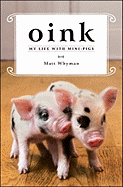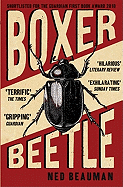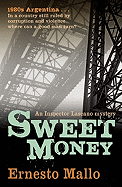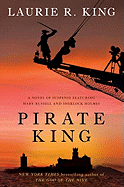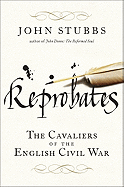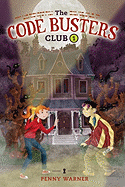Friday, September 23, 2011
You'd think it was a list of books for a reading group with interesting, eclectic taste: Water for Elephants by Sara Gruen, Anne Frank: The Diary of a Young Girl, Snow Falling on Cedars by David Guterson, The Hunger Games by Suzanne Collins, Brave New World by Aldous Huxley, Speak by Laurie Halse Anderson, Song of Solomon by Toni Morrison, The Catcher in the Rye by J.D. Salinger.
Actually these are some of the books that were challenged, restricted, removed, banned or otherwise attacked during the past year. (In an infamous case, a copy of the Qur'an was burned by a Florida pastor.) Some challenges stem from well-intentioned parental concerns but more often are made on shifting political, religious and cultural grounds. According to the American Library Association, "sex, profanity and racism" were the basis for most objections. Many challenges involve schools and school boards, some of which defend their teachers' and students' abilities and rights to choose what they read. Others accede to demands to remove titles or restrict them in various ways. Only this past week, a school board in Republic, Mo., decided to place Slaughterhouse-Five by Kurt Vonnegut and Twenty Boy Summer by Sarah Ockler in a restricted part of the high school library and allow only parents access to the books. The challenge was brought by a college professor who said the books were among titles that "teach principles contrary to Biblical morality and truth." The 30th annual Banned Books Week, sponsored by the ALA, booksellers and publishers associations and others, begins tomorrow. The centerpiece of the "celebration" is the display at libraries and bookstores of banned books. The Week has also included "read-outs," at which booklovers read from their favorite banned or challenged books. This year the Week is taking read-outs into the digital era, posting videos of booklovers reading aloud or talking about their battles against book challenges. The videos, running two to three minutes, will appear on special YouTube channels. Many bookstores and libraries are taping customers and patrons and posting the videos, but booklovers anywhere can participate on their own. For more information, click here.
The 30th annual Banned Books Week, sponsored by the ALA, booksellers and publishers associations and others, begins tomorrow. The centerpiece of the "celebration" is the display at libraries and bookstores of banned books. The Week has also included "read-outs," at which booklovers read from their favorite banned or challenged books. This year the Week is taking read-outs into the digital era, posting videos of booklovers reading aloud or talking about their battles against book challenges. The videos, running two to three minutes, will appear on special YouTube channels. Many bookstores and libraries are taping customers and patrons and posting the videos, but booklovers anywhere can participate on their own. For more information, click here.
We can't think of a better way to be reminded that the freedom to read is not something that should be taken for granted.
--Happy reading--and reading-out! --John Mutter
Last Man in Tower
by Aravind Adiga
In the slums of Mumbai, the two towers of the Vishram Society are the last bastions of middle-class respectability. The residential highrise isn't perfect: it doesn't have 24-hour running water; proximity to the airport means constant noise; repairs are desperately needed. But the tenants are like a big extended family.
Sixty-one-year-old Masterji is a retired high school teacher, and while living at Vishram he's lost the people he loved most, his college-age daughter and, just last year, his wife. Vishram is all he has left, and now Dharmen Shah, the oversize managing director of the Confidence Group, is offering all the tenants a fortune in square footage if they'll vacate and let him demolish the Vishram towers to create his dream, the Shanghai. All the tenants of Tower B decide to sell and move. But in Tower A, not everyone wants to go, and the decision has to be unanimous. Spies are everywhere, trying to sniff out the tenants who are holding the others back from the fulfillment of their dreams.
Author Aravind Adiga presents a five-story tower jam-packed with complex and vivid characters, along with the tenants' grown children, the construction team, lawyers, police, henchmen, vendors and laborers, the teeming masses of the streets, all treated with compassion. Just as he did in his Booker Prize-winning The White Tiger, Adiga presents no easy line between good and evil. Every tenant in Tower A is sympathetic in some way. Even the builder has his own griefs, as he strives for a last achievement in his threatened life. As the deadline creeps closer, allegiances shift, loyalties are strained and moral codes abandoned.
Adiga isn't entirely neutral in the moral melee that grips the Vishram Society. Adiga clearly favors his defiant old Masterji, enough to have the jolly god Ganesha whisper in the old man's ear, "I've been on your side the whole time, you old atheist." --Nick DiMartino, Nick's Picks, University Book Store, Seattle
Discover: The tenants of a highrise in Mumbai are all offered a fortune if they can convince everyone to sell in this gripping tale by a Booker Prize-wining author.
Boxer, Beetle
by Ned Beauman
Ned Beauman's first novel, Boxer, Beetle, is not for everyone. The young British author and critic has created a funny, literate romp that jumps between the Internet-centric London of today and the dark days of Hitler's Europe in the late 1930s. Along the way he gives us a classic country manor murder-mystery, a lesson in the science of eugenics, a smattering of repressed homoeroticism and side trips into strange spiritual cults, boxing, Batman and atonal music. On the other hand, maybe it is for everyone.
Kevin "Fishy" Broom is a Nazi memorabilia collector who mostly inhabits Internet chat rooms and auctions because he suffers from a rare disease that makes him smell like rotting fish. While researching an artifact for a subsequently murdered wealthy collector, Fishy stumbles on the mystery of a previously unknown 1936 Hitler letter to Philip Erskine, a British upper-class entomologist who discovered a beetle with wings colored like a swastika. Dr. Erskine, a closet homosexual, had become infatuated with a five-foot-tall, nine-toed, alcoholic Jewish boxer named Seth "Sinner" Roach--as unusual a specimen for study as his beetle. Could he learn enough from his beetle and boxer to create a superhuman race?
Beauman crams his short novel with so many digressions and unpleasant characters that many of us might just toss it aside in frustration were it not for his striking language and amusing philosophical observations. He is not afraid to cross genres or epochs in this inventive and exhilarating ride that is a good deal more than "skim-reading Wikipedia." –-Bruce Jacobs, founding partner, Watermark Books & Cafe, Wichita, Kans.
Discover: A clever and creative first novel that pushes the boundaries of historical fiction while telling a contemporary tale.
Mystery & Thriller
Sweet Money
by Ernesto Mallo, transl. by Katherine Silver
What can an honest cop do when nearly the whole system is corrupt? Argentine police superintendent Venancio "Perro" Lascano is doing his best to bring criminals to justice, but gets gunned down by corrupt fellow officers as a result.
While he's recuperating, Lascano is offered a substantial reward to find Miranda the Mole--a notorious bank robber who was just released from prison and is suspected of being involved in a recent heist. Since Lascano is presumed dead by most of the police force and is no longer receiving a paycheck, he agrees to hunt for Miranda. He especially needs the money because his lover, Eva, has disappeared and he hopes to track her down--if she's still alive. The Mole proves slippery though, and Lascano's reflexes and morals are both tested as he pursues him.
Adding to Lascano's problems, the men who wanted him dead still want him dead. But the new police chief and an idealistic young prosecutor are on his side, provided that Lascano is willing to testify against one of the generals who "disappeared" people during the Argentine junta's Dirty War.
Sweet Money is told in a stream-of-consciousness style; there are no quotation marks and all dialogue is in unbroken, italicized paragraphs. This makes for slightly difficult reading at first, but once comfortable with the style, the reader is placed smack into the paranoid world of 1980s Buenos Aires. Ernesto Mallo has managed to bring violent, corrupt Argentina vividly to life in this second Inspector Lascano mystery. --Jessica Howard, blogger at Quirky Bookworm
Discover: 1980s Argentina is riddled with corruption, making it almost impossible for an honest cop to remain honest.
Pirate King
by Laurie R. King
Pirate King is Laurie R. King's 13th entry in her Mary Russell/Sherlock Holmes series. The two are well-suited to each other, have been married three years. Mary has been inveigled, through a combination of Mycroft, Sherlock, and Lestrade, into investigating Fflytte Films as it gears up to film The Pirate King in Portugal. Allegations of financial fraud and drugs have pursued the company, and Mary is hired to replace their missing secretary, Lonnie Johns. The Pirate King is to be a film about the filming of Gilbert & Sullivan's The Pirates of Penzance, or as Mr. Pessoa, the poet/translator hired in Portugal, remarks, "Pirates, both fantasy and authentic.... A picture with two layers of dream. A picture which is itself a dream? Artifice upon artifice...."
Once docked in Lisbon, locals are hired to portray pirates, notably La Rocha of the terrifying scar and his first mate, Samuel. Just as the film is to convey layers of stories, the plot of the novel Pirate King has more layers than a well-made strudel and is just as delectable. There's even Rosie, the Marxist parrot, whose shrieked exhortations to the masses enlivens an already febrile situation.
Our narrator, Mary, has an ironic voice, and her wit is dry and penetrating ("however, knowing the House of Lords and its fondness for meddling in the lives of those who actually worked for a living..."); it is only the brilliance and bravery of her and her husband, Sherlock, that save the cast from a fate worse than, and also solve the mystery of why the subject of each Fflytte film is on conclusion replicated in reality. --Judith Hawkins-Tillirson, proprietress, Wyrdhoard Books, and blogger at Still Working for Books
Discover: Laurie R. King's 13th entry in her delightful Russell/Holmes series, with pirates, damsels in distress, a Marxist parrot and heroic, adroit feats by Mary Russell.
Nonfiction
Maphead: Charting the Wide, Weird World of Geography Wonks
by Ken Jennings
On the way to winning more than $2.5 million in 75 appearances on Jeopardy, Ken Jennings had to answer a fair share of geography questions. What wasn't necessarily apparent in that competition is that he's had a lifelong fascination with maps, an obsession that provides the springboard for a lively journey through the world of his fellow geography wonks.
To reveal that world, Jennings offers a dozen loosely connected chapters exploring aspects of his topic. "Geographical ignorance is such an ingrained part of our culture," Jennings writes, "that it's become an easy bit of comedy shorthand for ditziness." He found one antidote for that affliction in the National Geographic Bee, created in 1988 and now involving five million participants vying annually for a $25,000 college scholarship.
Other chapters consider more obscure topics, like the people Jennings calls "place collectors," bent on piling up visits to different locations. Among them are the Travelers' Century Club, whose members must have visited at least 100 different countries, or the Highpointers Club, 3,000 strong, comprised of people who have scaled the highest elevation in each state (Florida's is a mere 345 feet).
Those who recall Jennings's Jeopardy run won't have any trouble summoning him up here in all his nerdiness (Alex Trebek even makes a cameo appearance as moderator of the National Geographic Bee). And he can't always resist the urge to remind us he's the smartest guy in the room by dropping a few too many footnotes overstuffed with arcane knowledge.
But those flaws don't detract from the fundamental appeal of Jennings's book. For all the useful, fun, often surprising information he imparts, there's a subtle message that undergirds these stories: in rootless times, maybe we all need something to offer us a sense of our place in the world. An enhanced appreciation for geography, Ken Jennings's survey suggests, may be one road to that destination. --Harvey Freedenberg
Discover: Jeopardy superstar Ken Jennings takes readers on a whirlwind tour of the world of the geography-obsessed.
Biography & Memoir
Hemingway's Boat: Everything He Loved in Life, and Lost, 1934-1961
by Paul Hendrickson
Paul Hendrickson, NBCC award-winning nonfiction author for Sons of Mississippi, pulls off the remarkable feat of finding a fresh, new angle from which to approach Ernest Hemingway: his boat Pilar. Purchased in 1934 with an advance from his longtime publisher Scribner, she saw him through three wives, great achievements and critical failures in his writing career, big fish and little ones, and the beginnings and the endings of many relationships. Hendrickson suggests that Pilar may have been the love of Hemingway's life.
This is not a biography but a careful and compassionate rumination on the man through angle of the 38-foot motor yacht. Hendrickson has brought to his readers a Hemingway who is neither object of worship nor monster, but a full and complex human who made serious mistakes in his relationships and fought pitched battles against his own demons, and finally lost.
The Hemingway fan will be enthralled with new details of his life, and the study of figures previously treated as minor but now revealing new facets of the man. The less familiar reader will be fascinated by this comprehensive account of the master and his complex spiderweb of varied effects on so many lives, large and small. Hendrickson presents his unusual and noteworthy story with beautifully quiet intensity and contemplation. Hemingway's Boat achieves a terrific feat in reworking Hemingway's story. --Julia Jenkins, librarian and blogger at pages of julia
Discover: A lyrical, textured, and meticulously researched meditation on Hemingway from a fresh new angle.
History
The Destiny of the Republic
by Candice Millard
Candice Millard (The River of Doubt: Theodore Roosevelt's Darkest Journey) paints an indelible portrait of the 1876-1882 period, when the United States was still reeling from the Civil War, advances in science and medicine upset long-ingrained superstition, and politics was a blood sport. James Garfield, the 20th president, wrote that he could have died of exposure at 16 but God had something greater for him to accomplish. Charles Guiteau, a lawyer and skip-artist, believed that, having been spared in a steamship collision in June 1880, he had been given a divine mission. These two men did have appointments with destiny--but not as they expected and in a way that would shatter the nation.
Garfield did not want the Republican Party's nomination, and he refused to campaign; while others who wanted the office chewed each other up in desperate battles at the nominating convention, he went on to win the election in 1880. Millard writes, "Garfield could not shake the feeling that the presidency would bring him only loneliness and sorrow," and he was so right.
Despite the assassination of Lincoln 16 years earlier, the presidency still operated within old traditions. Anybody could walk into the White House; the president traveled without a single security guard; legitimate petitioners and pesky eccentrics had equal access to make requests for government appointments. The clearly unqualified Charles Guiteau campaigned for ambassadorships to Paris and Vienna during frequent visits to the White House. Denying this particular madman his wishes had serious consequences. On July 2, 1881, in Washington's Baltimore and Potomac train station, Guiteau fired two shots into the president at close range.
Millard's vivid telling excels on two important points: establishing Guiteau's insanity and describing the medical treatment Garfield received for what should have been a nonlethal wound. At the trial during which he used an insanity defense, Guiteau argued that "General Garfield died from malpractice." Guiteau may have been insane, but he was right about that, as the damning autopsy results showed. --John McFarland
Discover: A brilliantly written account of the tragic time when James Garfield, Civil War hero, pioneering congressman and 20th president, was mowed down by a madman as his administration began.
Stasiland: Stories from Behind the Berlin Wall
by Anna Funder
The Berlin Wall existed for 28 years as both a physical and symbolic barrier in a city and a country divided by ideology; it's been more than 20 years since it was physically and symbolically destroyed. While working for German overseas television in Berlin a few years after the Wall came down in 1989, Anna Funder became interested in the stories of ordinary citizens of the former East Berlin, as well as those who had enforced the rules of the German Democratic Republic. Those stories are collected in Stasiland, a work of investigative nonfiction being published in the U.S. for the first time and winner of the Samuel Johnson Prize in the U.K.
Funder spoke with ordinary citizens who had been the focus of attention from the Stasi, the East German secret police, as well as with Stasi agents. Granted, very few citizens were not the focus of Stasi attention at one time or another. Descriptions of Stasi facilities and actions sound as if they come straight out of a spy novel; however, Funder's evocation of the East German police state has more impact because it's true and reported by those who lived it.
Funder tells the stories of would-be escapees; separated families; one of East Germany's best-known rock musicians; a student targeted for surveillance because of her boyfriend, a propagandist; and one of the Wall's architects. Reported in a straightforward manner, these make for enlightening and accessible reading.
As 20th-century Communism fades into history, Stasiland serves to document and preserve the experiences of ordinary people who lived and struggled under it. --Florinda Pendley Vasquez, blogger at The 3 R's Blog: Reading, 'Riting, and Randomness
Discover: The experiences of ordinary citizens living on the East side of the Berlin Wall, shared with the West for the first time.
Reprobates: The Cavaliers of the English Civil War
by John Stubbs
In the years after Elizabeth I's death, the English church policies she had maintained throughout the "golden years" of her reign unraveled quickly. Her successors, James I and his son Charles, were adamant supporters of the divine right of kings in a world discovering the natural rights of man. Before long, the Stuart king Charles I found himself literally battling England's republican (and largely Protestant) factions to save his own royal neck. Those who supported Charles I's absolutist monarchy were known as Cavaliers.
The Cavaliers included several literary giants, whose lives John Stubbs (John Donne) examines in Reprobates. Among them are Ben Jonson, dramatist and patron of many young Cavalier poets; Sir John Suckling, best known for his "Ballad Upon a Wedding" and for inventing cribbage; and William Davenant, godson and self-proclaimed heir to William Shakespeare, who found the only thing worse than having syphilis in the 17th century was trying to cure it. Their poetic style was generally light, focusing on momentary pleasures and secular events, in contrast to the introspective and often spiritual works of immediate predecessors like John Donne.
With exhaustive facts and dry wit, Stubbs's book sketches detailed and fascinating portraits of the lives of the Cavalier poets, their loves and the political forces that shaped and were shaped by their work. History and literary analysis are punctuated with moments of levity and downright humor. Reprobates is not light reading, but it is rewarding. --Dani Alexis Ryskamp, blogger at Intractable Bibliophilia
Discover: A detailed and witty portrait of the lives of the Cavalier poets in the 17th century, and the political forces shaping and shaped by their work.
Psychology & Self-Help
Learning to Breathe: My Yearlong Quest to Bring Calm to My Life
by Priscilla Warner
After traveling the country promoting a book she co-authored (The Faith Club), Priscilla Warner was exhausted, out of shape mentally and physically, and worn down from battling an anxiety disorder that had caused her to have panic attacks for most of her life.
Fearing she was looking at her own mortality too early in life, she decided to "find her inner monk" and began a yearlong quest to ease her mind and soothe her soul. The result is Learning to Breathe, a terrific book that takes us on her intimate journey from healer to healer, seeking peace and wholeness.
Priscilla's story is vividly recounted as she opens up and learns from meditation teachers Sharon Salzberg, Pema Chödrön, the Dalai Lama and others. She tries yoga, Trager Technique, Somatic Experience Therapy and EMDR, among other therapies. She goes to a mikvah, visits with psychotherapist and guided imagery pioneer Belleruth Naparstek, and talks Ayurveda with Robert Sachs. As she becomes more proficient with her meditation technique, she even has her brain studied by Andy Newburg at the University of Pennsylvania.
All the while, Priscilla is getting to the root of the cause of her severe panic attacks, which she describes in heart-breaking detail. All this hard work allows her to release the anxiety, and thus the debilitating attacks, and settle into a more peaceful, calm life with her clearly supportive family.
Most of us cannot take a year off to meet teachers and healers, so take a vicarious healing journey by reading this book, find what resonates with you and dig deeper. --Susan Weis-Bohlen, breathe books
Discover: How to find your inner monk by meeting some of the world's greatest healers and following a year in the life of Priscilla Warner as she seeks to heal her panic attacks and reclaim her life.
Nature & Environment
Year of the Pig
by Mark J Hainds
The image of pigs as the lazy, self-indulgent sloths of the animal kingdom lives more in myth than fact. While it is true that sows will pop out more piglets than the most fertile rabbit, the feral pig will also show particular finesse in evading capture by would-be hunters, thus avoiding destiny with the barbecue. As bottom feeders, wild pigs will root and wallow, pillage and destroy, causing even greater damage than a stampede of cattle. In fact, as Mark J. Hainds concludes in his yearlong hunting travelogue, Year of the Pig, there is strong ecological justification for saying good riddance to feral pigs.
As a research associate and forester at Auburn University's Solon Dixon Forestry Center, Hainds knows a thing or two about the damage feral hogs can cause. He has witnessed the destruction caused by pigs to longleaf pine forests, to farm crops and to the native flora of the southeastern U.S. Hainds's hunting journey occurs in 2007, during the Chinese Year of the Pig, beginning as a project to kill a pig in states with established populations and ending as a 10-state hunt. Death from bow, gun or knife--name it and Hainds has likely accomplished his task with a studied hobbyist's glee, a marksman's delicate precision and a comedian's dry humor.
"Pig hunting should play a vital role in controlling pig populations," writes Hainds. "Hunters must resist the temptation to move pigs to areas that are currently pig free." The ecological and economic effects may be overwhelming, reducing biological diversity by outstripping native species and changing the face of our forests forever. --Nancy Powell, freelance writer and technical consultant
Discover: The excitement of a 10-state hunt that pits the outdoors-loving author in a battle of wits against his omnivorous, mud-bathing foe.
Pets
Oink
by Matt Whyman
When children's book author and househusband Matt Whyman realized that the youths in their cars outside his house were not eating sandwiches out of silver foil wraps but instead selling crack cocaine, he moved his large family from their cramped, three-bedroom terrace in London's East End to a place on the edge of the woods in West Sussex.
This merry memoir of family growing pains and too many pets has so many laugh-out-loud sequences it's embarrassing to read in public--like when his teenage daughters tinker with his cellphone, so that the ringtone is an oink. Whyman's harried husband routine rings true as he narrates, with fuss and fluster, trying to move the mini-pigs outdoors where they belong, keeping them out of the chicken eggs, assisting the sexy vet in castrating Butch, learning to give worming shots without passing out. Whyman proves to be a smart, kind, amiable entertainer who reveals subtle skills in his comic tale-telling. Anyone with an affinity for little four-footed friends will be thoroughly charmed.
Half the delight in this book is watching the characters come to life--helpful neighbor Tom, Whyman's teen daughters (who find him totally embarrassing), his loving wife--and collide with the complaining neighbor or the hot blonde veterinarian or the mysterious breeder of mini-pig semen, not to mention the annoyed cat on tranquilizers, the baffled dog who becomes the mini-pigs' surrogate mother, and of course, Butch and Roxi, the mini-pigs, who may be brother and sister.
The climactic scene where Whyman returns from face-painting at the fair, his face blue as a Smurf, to find himself confronting thieves busy on the house next door where his own escaped, drunken mini-pig is rooting through fermented fallen apples, is sheer comedic brilliance to top off the most good-hearted, hilarious memoir in years. --Nick DiMartino, Nick's Picks, University Book Store, Seattle
Discover: British author Whyman's family memoir recounts their hilarious misadventures raising two mini-pigs in rural West Sussex.
Children's & Young Adult
The Secret of the Skeleton Key: The Code Busters Club, Case #1
by Penny Warner
The night before Skeleton Man's house caught fire, seventh-grader Dakota "Cody" Jones and her friend Quinn noticed two strangers leaving the old man's house. They had also seen his bony hand tracing little stick figures on an upstairs windowpane. It had struck them as odd then, and it seemed downright ominous the next morning as the two watched the fire department douse the flames and an ambulance take Mr. Skelton (Skeleton Man) to the hospital. Something was definitely amiss, and the Code Busters Club was on the case.
Meet Code Busters Cody, Quinn, Luke and Maria Elena--aka CodeRed, Lock&Key, Kuel-Dude and Em-me--four friends who like solving mysteries, puzzles and decoding secret messages. Together they try to find out the truth about the fire and the money-grubbing "relatives" skulking around Mr. Skelton's house. Riddles and codes abound as the Code Busters tackle this case, eluding curfews, the school bully and even a mountain lion in the process.
Penny Warner (The Mystery of the Haunted Caves) fills this mystery with codes and ciphers that readers can solve along with the characters. Morse code, American Sign Language and semaphore are just a few examples of what its pages contain. The Code Busters Club promises to be a fun series sure to appeal to graduates of Encyclopedia Brown and Ivy & Bean. --Julia Smith, blogger and former children's bookseller, working on her masters in Library and Information Science.
Discover: The first book in a fun new series about four friends who use their ace code-breaking skills to solve a mystery.
Daniel X: Game Over
by James Patterson and Ned Rust
The newest entry in the Daniel X series by James Patterson (Maximum Ride) novelizes the graphic format title of the same name, and expands Daniel's adventures in Japan as he hunts down some of the top 10 baddies on his List of Alien Outlaws.
Although he may seem like a teen boy, Daniel X is really an Alpar Nokian, a member of a nearly extinct alien race. He hunts aliens from the List with his power to manipulate atoms and create anything imaginable. Weapons, disguises and virtual friends and family all appear with hardly a thought. He needs every trick in his arsenal when List aliens Number 7 and 8 plot to enslave teens throughout the world mentally by using their company's video games. Even worse, they're working with top evil alien Number 1, codenamed The Prayer. Daniel both fears and desires him the most because he is "My parents' killer... my ultimate nemesis... the darkest stain in all my nightmares." He finds a surprising ally in the son of 7 and 8, Kildare, who helps him again save the world from a threat they never expected.
Game Over melds intriguing elements for Daniel X series fans: aliens, fantastical abilities, video games and saving the world. The Japanese setting provides opportunities throughout the narrative to interject cultural references and foreign words. The graphic novel's ending is a bit stronger and has the benefit of riotously colorful illustrations. The novel version, however, adds a few twists. --Jessica Bushore, veteran Ohio public librarian
Discover: Evil aliens, mind controlling video games and plots of world domination--it must be another Daniel X adventure!
Wisdom's Kiss
by Catherine Gilbert Murdock
Readers looking for the same, only different, will be delighted with this new YA fairy tale by Catherine Gilbert Murdock. Written from eight perspectives through journal entries, encyclopedia pages, letters and even a play, Wisdom's Kiss tells the story of Princess Wisdom, a soldier named Tips, and Trudy, an orphaned girl with second sight.
Trudy and Tips are childhood friends growing up together in the small town of Bacio. Their paths cross with Princess Wisdom when she travels the country to marry Roger, the Duke of Farina. But in this comedy of errors, nothing turns out the way any of them have planned. Full of secrets, adventure, political intrigue, a traveling circus, magic and, of course, true love, this twisting tale never takes itself too seriously.
Young adult readers may remember author Murdock from her Dairy Queen trilogy. While those novels were realistic fiction, this story is fully set in the fairy-tale realm. Some of the characters from Princess Ben make appearances here, but each book stands on its own. And although it's listed as a YA, middle-grade readers will probably enjoy this novel just as much.
With so many viewpoints, the disjointed style of storytelling will not be for everyone. But for those looking for an unusual take on tales of magic and true love, this may well be the lighthearted fantasy they've been waiting for. --Sherrie Petersen, children's book reviewer and blogger
Discover: A lighthearted fairy tale of magic and true love, told from eight different perspectives.


